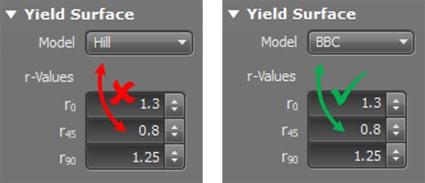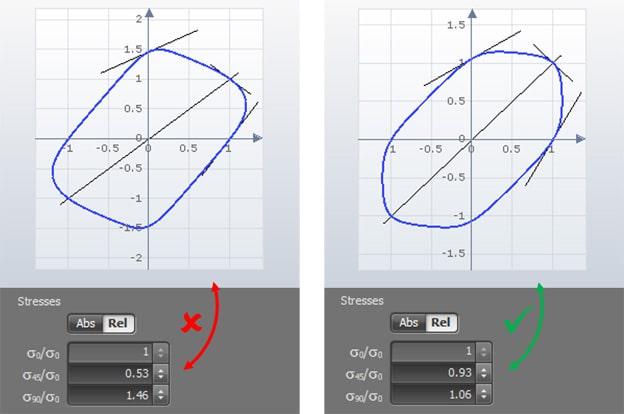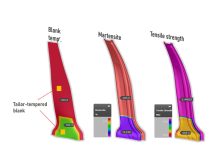Why Material Cards are STILL a Major Issue in Part Forming Simulation
In this article, AutoForm’s Technical Product Manager Andy Walker describes the attitudes and issues that are perpetuating the use of incorrect material cards by many a simulation engineer. How can you ensure that you have a valid material card and are not simply playing the lottery?
In my previous article, I discussed the all-too-common issue of using an incorrect material card and the effect this has on the accuracy of the simulation results.
So why does this happen?
It all comes down to having the right knowledge….
Over the last four years (and many years prior on the subject of aluminum), I have had the pleasure of training users and potential users of AutoForm around the world on the mysteries of material theory. My teachings cover such topics as experimental characterization & material theory (i.e., what all those strange symbols mean) to how to construct a meaningful material card at the end of it all. What has become clear during this training is that on this subject, users generally fall into two broad groups defined by the size of the employing company.
I personally label these two groups “I don’t need to know” and “I can’t know”.
Now, before continuing, I am not for one moment advocating that users willfully choose ignorance or, worse still, adopt an “I don’t care” attitude — far from it! Time constraints, budget cuts and manpower limits (just to name a few) are primary drivers for why this situation continues to manifest itself across the globe, and as the use of these software codes increases, so does the inherent problem of a knowledge deficit. Without further ado, let’s examine these two groups a little more closely:
Material Cards and “I Don’t Need to Know”
Those who work for an OEM or global Tier 1 supplier will have a separate department or group dedicated to characterizing the material and creating the relevant material cards. This works reasonably well, but only if the department contains someone whom understands the particular intricacies of creating a material card for a forming simulation — when to use this yield surface or that one, what the correct hardening law approximation is, etc. What many forget is that in the early days, these scientists and engineers had predominantly a crash background and they stuck with what they knew — hence why we can still find archaic, outdated material cards where Hill 48 (or even Von Mises) yield surfaces are applied to inappropriate materials such as aluminum in use. In this scenario, the user consults the part drawing, reads off the material designation, and loads the ‘correct’ material card from a central repository. Training in materials is generally not considered necessary for the user (aka: I don’t need to know) — seeing as “we have an entire department for that sort of thing.” As a direct consequence, since the user does not understand what they are looking at, they typically never review the material card before use.
Material Cards and “I Can’t Know”
The second group comprises those who work for “other companies”. Often working in tightknit groups of 1-3 analysts, management expect them to be the fount of all knowledge when it comes to material and material cards. But again, they can rarely deliver on that front. Their knowledge of process, CAD skills, and the general ability to “pull a rabbit out of a hat” are far more highly prized skills than being able to recognize a defective material card. These groups rely on the material cards supplied free with the software, handouts from OEMs, or whatever they can find on the internet and other equally dubious sources. These are the users who regularly contact support asking, “Do you have a material card for this designation?” Bizarrely, when we broach this subject with the OEM, their response is invariably, “Why don’t they ask us…?” In a similar manner to the preceding group, when the employees request training, the response is along the lines of “We can’t afford the cost of training” or “We can’t afford to give you the time off paid work to attend — you know we have that rush job to complete by next week for XYZ…” (aka: I can’t know)

Fig. 1: This is a very common problem. Due to the mathematics of the Hill 1948 yield surface approximation, the equation does not predict the yield surface correctly for materials where r < 1

Fig 2: As experienced by one user, using these values for steel in an aluminum card led to wildly inaccurate results…

Fig. 3: A distorted yield surface such as this will generate incorrect failure, press loads and springback predictions to name but a few
Is This Really That Important?
In simple terms — yes. To offer a more verbose response, yes and yes. Material cards are a fundamental part of the simulation process, whether working with forming, crash or NVH. When examining the accuracy footprint of a forming simulation, up to 66% of said footprint can be directly attributed to the material characterization. Think of it this way: if it wasn’t really that important, then why not just use a single generic steel card to fulfill all your simulation needs?
Additionally, we are all engineers — and that carries significant meaning. In order to make an informed engineering decision, the user must have all the necessary tools at their disposal. In this use case, rather than physical tools, we are referring to the knowledge based tools needed to confirm that the material card, the results, and any changes (at the very least) all obey the LAR rule. And what is the LAR rule? Looks About Right, one of the first things I learned on the job. If your material card, results, design, etc. all look about right, they probably are correct — if not, then it probably isn’t correct and necessitates further investigation.
The Stumbling Blocks
In a perfect world, this situation would never be allowed to manifest. The material cards would be available on a cloud-based server for all to access freely. Infinite resources of time and monies would be allocated to ensure that the user base is kept up to date with the latest trends and theories — not to mention comprehending the meaning behind it all.
Now, back in the real world, this ideal is never going to happen. Every company has a finite budget, manpower limits, and time pressures to contend with. Unfortunately, those in control often don’t understand and recognize the importance of training — or if they do, they’re under such time pressures that they cannot physically release the required individuals. As a result, training is generally limited to one or two select employees at best. Those lucky few are expected to return and cascade the learning within their group, yet are rarely afforded the time or opportunity to do so effectively.
As for the material cards, before we even reach this point in the process, the cost and time effort to characterize materials is inordinately high. In addition as new and improved features are added to the software (kinematic hardening, edge crack prediction, shear failure, etc.), so increases the required amount of experimental data. What’s worse, many of these require data from tests that are not standardized (i.e., there is no ISO/ASTM/JIS standard or similar) and can only be performed at a select few OEMs and universities. For these reasons (and many more besides), cards are closely guarded and rarely, if ever, released to the wider market.
How Can This Problem Be Addressed?
Before anything can be ‘fixed’, as the numerous related LinkedIn posts will attest to, you have to first recognize that there is an issue, identify the root cause, and then be prepared to do something about it.
Both the problem and the solution primarily centers on education. Education, like everything else, comes in many different flavors, but it is clear that we have to educate all of those in the user/decision process — from the top down in most cases. It should be clear by now that decision makers need to understand the consequences of not sanctioning the requisite training. By not permitting their users to undergo training (ultimately foregoing the full benefit of the software), they fail to understand that the most important part of the software/hardware combination is not the number of processors or licenses, but the organic component sat at the terminal. Too many believe that everything a computer generates is inherently and unquestionably correct; yet the second thing I learned on the job was to question everything — particularly if it originates from a computer.
The users have to be permitted and empowered (i.e., trained) to gain the confidence to question the validity of the material card and the results it generates. They also need to understand how the various values impact the results and how a change in grade could deliver the part as requested by the customer.
And of course, we cannot forget about the end users (these should never be forgotten) — the tryout, commissioning and production team. These individuals, responsible for turning tons of iron and steel into a robust working tool, also need to understand the impact of a high yield strength or a low r-value incoming material on the produced part.
After education, the second solution (and I will be the first to admit it is highly unlikely to ever occur) is to permit access to a free cloud-based repository where all users, irrespective of code or country, can upload their individual data for all to use. This, to the best of my knowledge, does not exist. Resource repositories certainly do exist; some are provided by a particular material producer for their own products and are free to use (for example, TATA Steel Aurora). Others that cover a range of materials often come with a hefty annual subscription and only provide the raw data (so you still need to apply the right knowledge to generate the material card) — a quick internet search will yield their names and addresses.
At AutoForm, we are endeavoring to address both issues. We offer comprehensive training courses on the subject of material theory, characterization, and the subsequent generation of the material card. This training is by its very nature language and software product independent. We also work with the users (often in partnership with the material producer) to help them develop their own material cards, advising on testing regimes, data requirements, and the like.
Additionally, we constantly strive to expand our material card library (with great thanks to all the contributors), which at the time of writing comprises approximately 1,000 commonly used automotive and aerospace material cards. These steel, stainless steel, aluminum, and titanium material cards are free to download and use all AutoForm users. However, we do not rest on our laurels; at the time of writing, we are in negotiations with additional material manufacturers from around the world to further enhance and expand this library.













